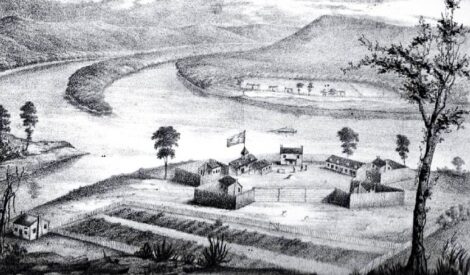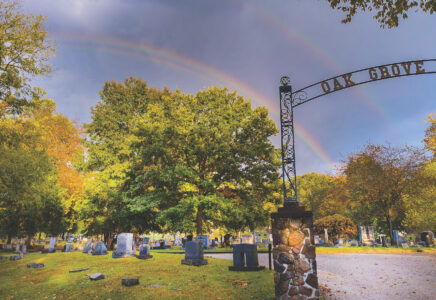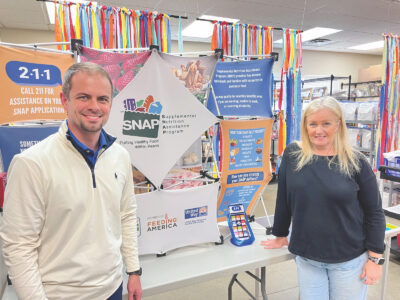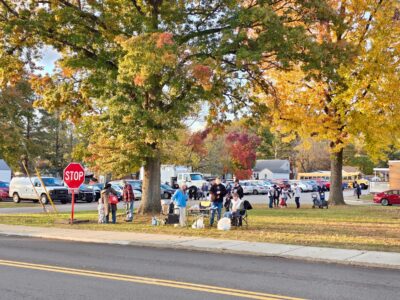Bird crisis: Feathered friends vanishing
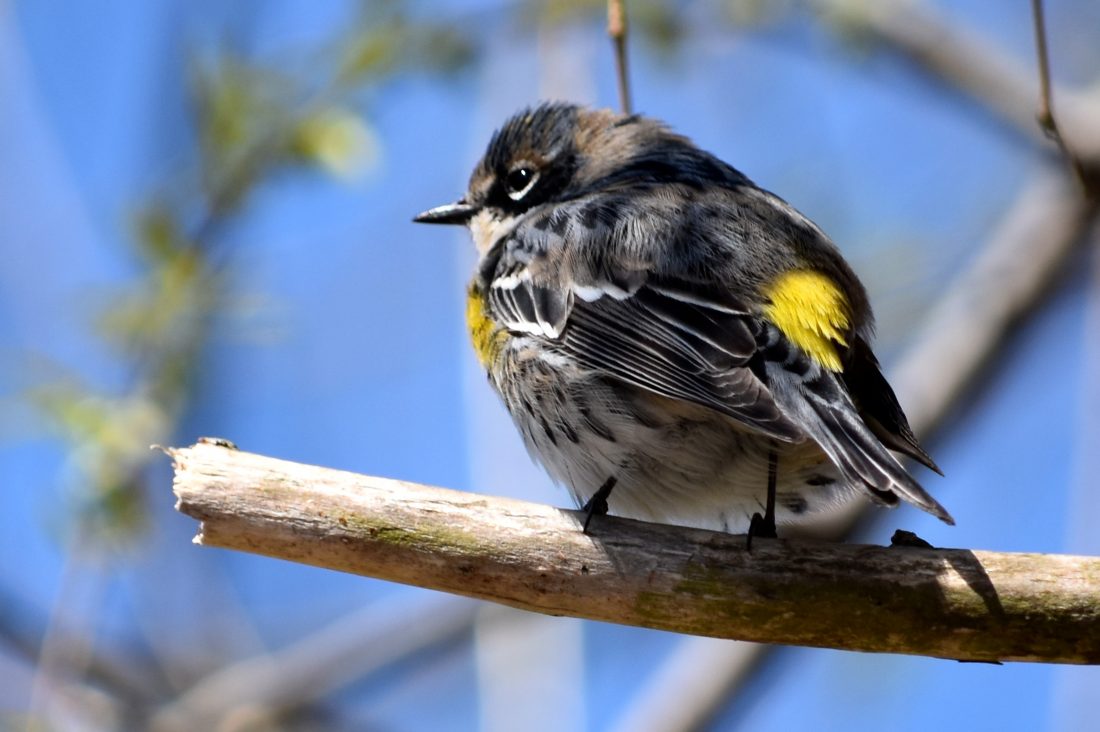
Photo courtesy of Bev Hogue, of Adamst Township. A yellow-rumped warbler stops in its spring migration at the wetlands behind da Vinci's in Williamstown in 2018.
A loss of 3 billion birds–while making mainstream headlines and shocking the general public–came as no surprise to those who watch the avian wildlife avidly.
“You talk with local birders who’ve been watching and documenting here for a long time, and you hear how back in the 1960s and 1970s they could see 30 cerulean warblers in a day out at the McDonough Park,” said Ranger Michael Schramm, of the Ohio River Islands National Wildlife Refuge in Williamstown. “Now if I see one, I’m lucky. They’re not as abundant as they used to be.”
A study published in the academic journal “Science” on Sept. 19 noted the 48-year tally of population decline in North American bird populations in the U.S. and Canada and experts say this loss is signaling a widespread ecological crisis.
“We are certainly undergoing a mass extinction right now, but extinctions don’t happen overnight and the first step in preventing them is to recognize there’s a problem,” said Bird Watcher’s Digest Editor Dawn Hewitt in her Marietta office Wednesday.
But it’s not just the beautiful, vibrantly-colored birds that are declining, it’s their brown counterparts and the base of their food chains.
The majority of losses have impacted populations of sparrows, warblers, finches and swallows–all common species that are integral to functioning ecosystems including pest control and seed dispersal. Birds pollinate flowers and recycle nutrients back into the earth.
“Insects are the base of many of their food chains, and while the study mentioned pesticides, I don’t think, in my opinion, it made it clear enough that these pesticides aren’t just affecting birds’ eggs but that they’re killing off the insects they eat,” said Schramm.
Hewitt agreed.
“If an owl eats a poisoned rat, the owl will be poisoned, too,” she explained. “Even bug spray on our plants–birds need bugs, insect larvae is baby food for birds.”
Causes were not specifically identified in the study, though it noted that the largest factor driving these declines is “likely the widespread loss and degradation of habitat, especially due to agricultural intensification and urbanization.”
All hope is not lost though, said Hewitt.
“We can landscape differently…embrace biodiversity, but we need more than thoughts and prayers,” she continued. “We need more people to change their behavior.”
Bev Hogue, a backyard birder for the last two decades, said while she enjoys bird, they serve more important purposes.
“It’s a cliche to go back to the canary in the coal mine but having birds around, hearing their song it’s not just for our enjoyment, not just to make me happy,” said Hogue, of Adams Township. “They’re a sign of a healthy ecosystem. If they’re going away, that’s a sign of bad times coming.”
Ways to help include avoiding the use of pesticides and poisons, landscaping with naturally occurring species, reducing the use of plastics and participating in “citizen science.”
“The documentation of bird populations has never been better or easier to do than now,” said Hewitt. “Project Feeder-Watcher, or the Ebird database–I use that database’s app every time I go out birding, and anytime I see a bird, I enter it.”
Mountwood Bird Club member Dick Esker, of Washington, W.Va. has counted birds on both sides of the Ohio River since 1979.
“Our club every year does a Christmas bird count and that goes into the database,” said Esker. “Some populations are doing OK like the eagles and the ospreys, but we do see fewer migrant birds than before. The warblers, vireos and tanagers we’re seeing less of every year.”
The club can be found on Facebook or by calling Esker at 304-863-8765.
Hogue said she’s thankful for recent changes at Marietta College, where she teaches English, that have drawn more birds back into the diverse campus.
“Those new beds with the wildflowers, brought back beautiful finches all over the sunflowers,” said Hogue. “If you start paying attention, we truly have some amazing birds in our area that are worth protecting. In the spring we’re right on the path of migration for warblers that make a ruckus in the woods, in the cemeteries around town you see starlings. We need to have them.”
Janelle Patterson can be reached at jpatterson@mariettatimes.com.
At a glance:
• A recent study published this month in the academic journal “Science” found that North American bird populations have dropped by 29 percent since 1970.
• Report title: Decline of the North American avifauna.
• Additional findings:
• A continent-wide weather radar network also reveals a similarly steep decline in biomass passage of migrating birds over a recent 10-year period.
• This loss of bird abundance signals an urgent need to address threats to avert future avifaunal collapse and associated loss of ecosystem integrity, function and services.
Source: The American Association for the Advancement of Science.
How to help
1. Keep cats indoors.
2. Avoid the use of pesticides and poisons.
3. Landscape with naturally occurring species.
4. Make windows safe for birds.
5. Drink bird-friendly coffee.
6. Participate in citizen-science.
7. Reduce the use of plastics.
Source: Cornell Laboratory of Ornithology, Cornell University and Bird Watcher’s Digest.

